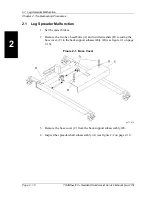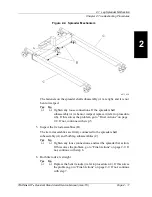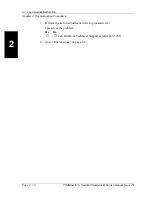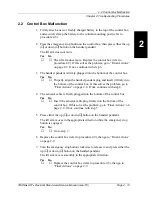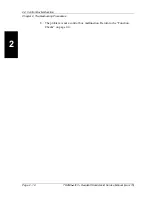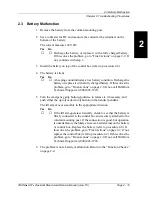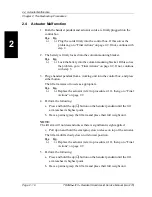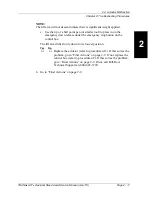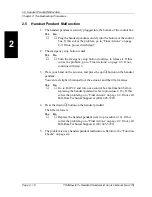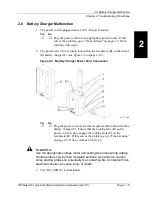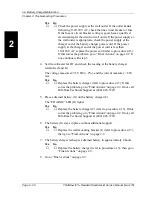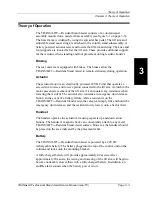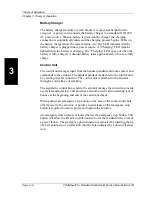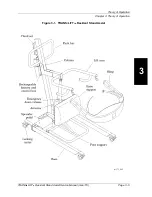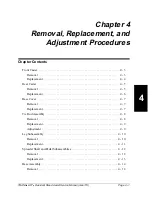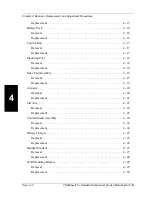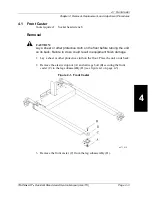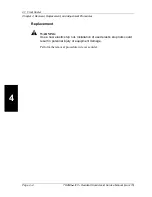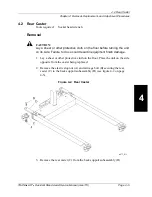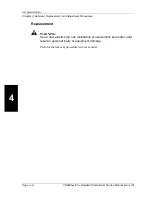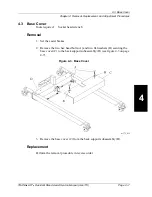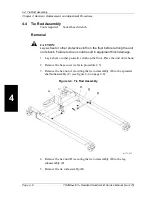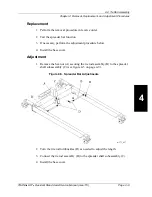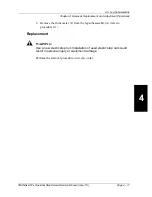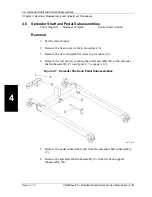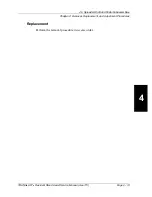
Theory of Operation
Chapter 3: Theory of Operation
Page 3 - 4
TRANS
l
LIFT
TM
Resident Stand Assist Service Manual (man173)
3
Battery Charger
The battery charger mounts to a wall bracket at convenient height for the
caregiver. A power cord connects the battery charger to a standard 110/120V
AC power source. When a battery is placed on the charger, the charging
connection is automatically made and the charging process begins. LEDs on
the battery charger show the system status. An “On” LED indicates that the
battery charger is plugged into a power source. A “Charging” LED remains
lighted while the battery is charging. The “Charging” LED goes out when the
battery is fully charged. A drained battery takes approximately 4 hours to fully
charge.
Control Unit
The control unit accepts input from the handset pendant and routes power and
commands to the actuator. The handset pendant is attached to the control unit
by a multi-pin cable connector. The control unit is attached to the actuator
through a cord with a coaxial plug.
The signals the control box sends to the actuator manage the current to provide
a soft start and soft stop. This provides a smooth assist with no startling jerk or
bounce at the beginning and end of the assist movement.
When pushed, an emergency stop button on the face of the control unit shuts
off all power to the actuator. A positive twist release of the emergency stop
button is required to restore power and operate the actuator.
An emergency down release is located below the emergency stop button. This
button will allow the lift arm to drift down to lower the resident in the event of
a power failure. The emergency down function is activated by inserting the tip
of a ball point pen (or similar tool) into the hole indicated by a down (
⇓)
arrow
icon.

